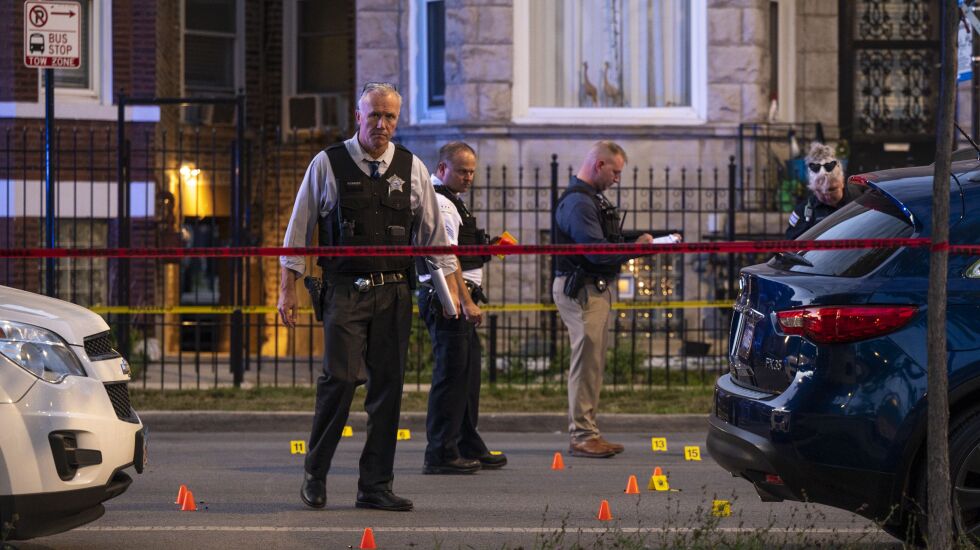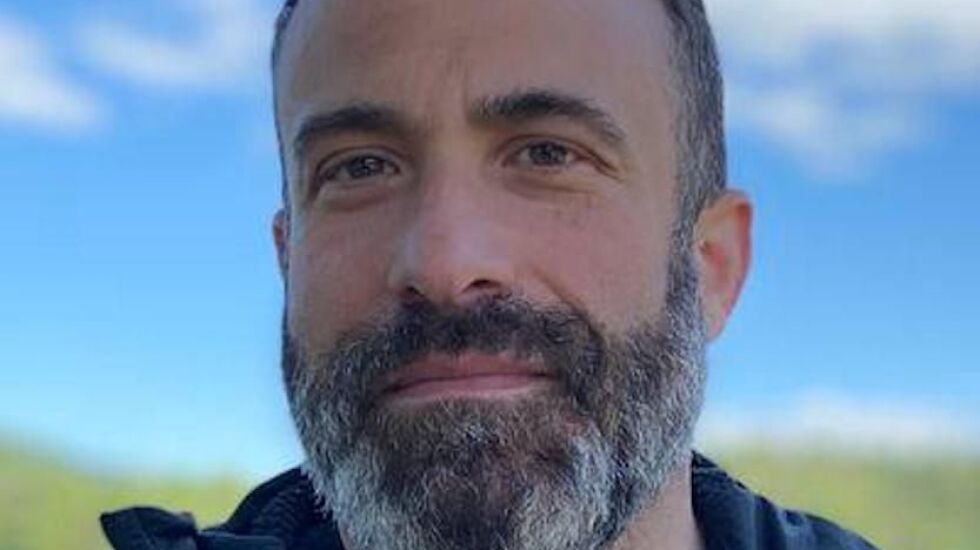
For more than a decade, some people have used the term “Chiraq” — a mashup of Chicago and Iraq — to describe a city whose violence makes some neighborhoods feel like battle zones.
Now, researchers say they’ve found that some parts of Chicago are even deadlier for military-aged young men than what U.S. soldiers faced in war zones in Iraq and Afghanistan.
The risk of a man 18 to 29 years old dying in a shooting in the most violent ZIP code in Chicago — 60624, a swath of the West Side that includes Garfield Park — was higher than the death rate for U.S. soldiers in the Afghanistan war or for soldiers in an Army combat brigade that fought in Iraq, according to a study published in the medical journal JAMA Network Open.
“You fight in an Army combat brigade, you come back and say, ‘My God, I was in the thick of it for a year, and look at the risks I faced,’ ” says Brandon del Pozo, a Brown University researcher and former New York City cop who worked with three other scholars to examine violence in Chicago, Philadelphia, New York and Los Angeles. “In Garfield Park, these young men face those risks every single year. And the risks accumulate.”
Chicago's firearm violence led residents to call it "Chiraq." But do the risks of gun violence in US cities really compare to the risks of war? In a new @JAMANetworkOpen study, our team did the math. The answer: In some US cities, the risks are much worse.https://t.co/iXm6YyeSXL
— Brandon del Pozo, PhD, MPA, MA (@BrandondelPozo) December 22, 2022
ZIP code 60624 is bordered by Cicero Avenue on the west, Chicago Avenue on the north, Homan Avenue on the east and Roosevelt Road on the south. Garfield Park is in the middle.
Among men ages 18 to 29, the annual rate of firearm homicides in that ZIP code was 1,277 per 100,000 people in 2021 and 2022, the study found, compared with an annual death rate for U.S. troops in a heavily engaged combat brigade in Iraq of 675 per 100,000.
Even when the researchers expanded their sample to include Chicago ZIP codes ranked in the top 10% of violence, young men still faced a greater risk of dying than soldiers in Afghanistan and Iraq, the study found.
The study also looked at Philadelphia, New York and Los Angeles. The most violent ZIP codes in Philadelphia surpassed the risk of combat death by military service members, too, but the death rate there was lower than in Chicago, the study found. New York and Los Angeles didn’t have any areas that were so deadly.
And, del Pozo says, “Across all the cities we studied, we found young Black and Hispanic men overwhelmingly bore these warlike risks of firearm death and injury. They were 96% of the victims.”

“Philadelphia and Chicago suffer from two things: more concentrated segregation and more concentrated violence,” del Pozo says.
Violent crime is the biggest issue in this month’s mayoral election. Annual murder numbers were near all-time highs in 2020 and 2021.
Some candidates are running on tough-on-crime campaigns. Businessman Willie Wilson, whose son was killed, controversially says cops should chase down criminals like “rabbits.”
Mayor Lori Lightfoot says the city is making progress on reducing crime, with investments in the city’s most dangerous neighborhoods contributing to last year’s 14% decrease in fatal shootings.
Still, del Pozo says, “If you are talking about the historical predicament of young men in Garfield Park, it has never been worse.”
He notes that in some Chicago areas — such as ZIP code 60624 — per capita gun violence rates remain higher than during some of the city’s most dangerous periods in the early 1970s and early 1990s.
“ ‘Chiraq’ is a cultural trope,” del Pozo says. “We wanted to see if there was any empirical basis to the trope — and unfortunately there is.”
The findings of the study, funded by the National Institutes of Health, “suggest that urban health strategies should prioritize violence reduction and take a trauma-informed approach,” the researchers wrote.
“We fully expect veterans returning from a year at war to suffer from PTSD and to be more vulnerable to alcoholism, divorce, substance use, homelessness, mental illness,” del Pozo says. “If that’s the case, I can only imagine what it says about young men who experienced even greater levels of risk of violent death year after year after year in Chicago. That is a health crisis.”
Across all the cities we studied, we found young Black and Hispanic men overwhelmingly bore these warlike risks of firearm death and injury. They were 96% of the victims. In the worst area of Chicago, they faced an annual shooting risk of nearly 6%. https://t.co/esMtenVCSW
— Brandon del Pozo, PhD, MPA, MA (@BrandondelPozo) December 22, 2022







